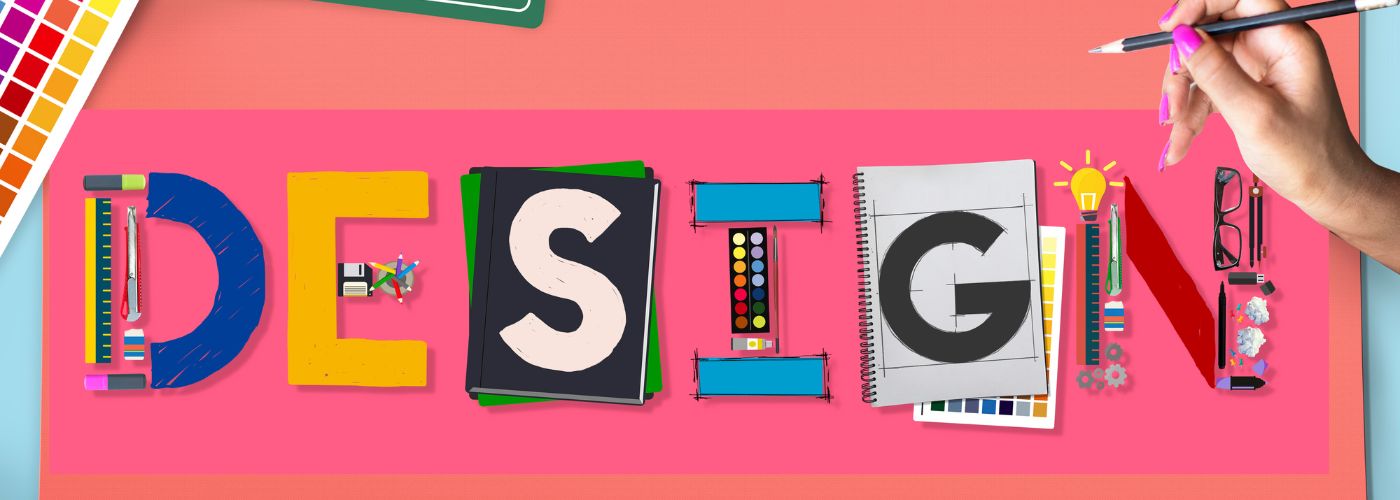Why Is This Topic Important?
In an era where attention spans are shrinking, visual storytelling has become essential for designers. A compelling visual narrative not only enhances user engagement but also strengthens brand recall. Whether you’re working in an integrated marketing agency in Bangalore or a leading design firm, incorporating storytelling elements into designs can make them more effective and memorable. With businesses competing for customer attention, impactful designs can drive conversions and foster loyalty.
What Is Visual Storytelling in Design?
Visual storytelling in design refers to the art of using graphics, images, typography, and colors to convey a message or evoke emotions. Instead of relying solely on text, designers use visual elements to craft an immersive experience that resonates with audiences. This technique is widely employed in advertising, branding, website design, and social media campaigns.
The Role of Visual Storytelling in UI/UX Design
For UX/UI designers, storytelling is crucial in creating intuitive and engaging digital experiences. It ensures that:
- Users understand the brand message at a glance.
- The interface flows logically and enhances usability.
- Emotional connections are formed, leading to better engagement and retention.
For instance, companies partnering with marketing agencies in Mumbai use storytelling-driven UX designs to guide users through seamless website journeys, increasing interaction rates.
Key Elements of Impactful Visual Storytelling
1. Color Psychology
Colors evoke emotions and influence decision-making. For example:
- Red conveys passion and urgency (often used in call-to-action buttons).
- Blue represents trust and professionalism (ideal for corporate brands).
- Yellow radiates energy and optimism (used in creative campaigns).
2. Typography Matters
Font styles communicate mood and brand personality. A well-chosen typeface enhances readability and adds depth to the message. Designers should opt for:
- Serif fonts for a traditional, authoritative feel.
- Sans-serif fonts for modern and clean aesthetics.
- Script fonts for a touch of elegance and creativity.
3. Imagery and Composition
Strong visuals and structured compositions keep users engaged. High-quality images, illustrations, and well-balanced layouts ensure:
- A clear hierarchy of information.
- A guided user experience.
- Aesthetic appeal that aligns with the brand identity.
4. Consistent Branding
Maintaining brand consistency across all visual elements ensures recognition and trust. Whether designing for an integrated marketing campaign or a startup brand, elements such as logos, colors, and fonts should align across platforms.
5. Data Visualization for Impact
Converting complex data into visually appealing infographics or charts helps users digest information quickly. It enhances clarity and strengthens storytelling through:
- Graphs to showcase trends.
- Infographics to simplify statistics.
- Icons for quick information access.
How Brands Use Visual Storytelling Effectively
Several top brands leverage visual storytelling for compelling designs:
- Apple: Uses minimalistic yet powerful visuals that communicate elegance and innovation.
- Nike: Combines bold typography and high-energy imagery to evoke inspiration.
- Airbnb: Uses real customer images and storytelling to foster trust and relatability.
The Future of Visual Storytelling in Design
As technology advances, new tools are shaping the future of storytelling in design:
- AI-driven design tools personalize user experiences.
- Augmented reality (AR) enhances interactive storytelling.
- Micro-animations add subtle engagement elements to websites and apps.
Conclusion
Visual storytelling is no longer an option—it’s a necessity for designers aiming to create impact. Whether you’re in an integrated marketing agency in Bangalore or working with marketing agencies in Mumbai, harnessing the power of storytelling in design can elevate brand messaging, captivate audiences, and drive conversions.
Does this interest you? Connect with us to see how we can help you!
Trending FAQs
- What is visual storytelling in design? Visual storytelling involves using images, colors, typography, and layouts to convey messages effectively and emotionally.
- Why is storytelling important in UI/UX design? It helps create seamless and engaging user experiences, guiding users through digital platforms intuitively.
- What are some examples of visual storytelling in branding? Brands like Apple, Nike, and Airbnb use visuals to evoke emotions and communicate brand identity.
- How do colors impact visual storytelling? Different colors evoke various emotions, influencing user perception and decision-making.
- What are the best tools for visual storytelling in design? Popular tools include Adobe Creative Suite, Figma, and Canva.
- How does typography contribute to storytelling? Fonts set the mood, reinforce branding, and enhance readability.
- What role does data visualization play in storytelling? It simplifies complex information, making it easy to understand through charts, graphs, and infographics.
- How can marketing agencies use visual storytelling? Agencies integrate visuals into campaigns to engage audiences and strengthen brand messaging.
- What are the latest trends in visual storytelling? AI-powered design, AR experiences, and micro-animations are reshaping storytelling in design.
- How can I improve my visual storytelling skills? By studying design principles, experimenting with layouts, and analyzing successful brand visuals.
Some of the services that Clevertize provides are:
Creative Services, Performance & Digital Media Marketing, Visual Identity & Branding, Campaign Management & Analysis, UI/UX & Website design, Video creation, Media planning & buying, Chatbot & more.
If Return on Investment is critical for you, talk to Clevertize!
Reach out to us at saumya@clevertize.com!





